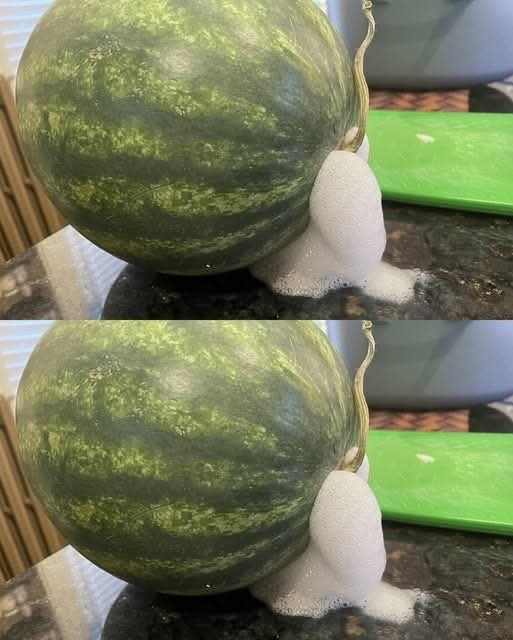Absolutely! Here’s a complete, clearly formatted article covering all requested sections for your foaming watermelon situation—structured like a helpful, informative (and slightly fun) guide:
“My Watermelon Started Frothing and Foaming Like This. It’s Freaking Me Out. Is It Inedible?”
Introduction
You slice into a juicy watermelon, expecting sweet refreshment… but instead, you’re met with fizzing, foaming, and a suspicious smell. Is this a science experiment gone wrong? Is it still safe to eat? Let’s break down exactly what’s happening and what you should do next.
Origin and Cultural Significance
Watermelon, a summertime staple across cultures, has been cherished since ancient Egypt. It symbolizes refreshment, health, and hospitality. But even this beloved fruit isn’t immune to nature’s quirks—like fermentation. While traditional fermented foods are common in many cultures, watermelon is not usually one of them (at least, not unintentionally).
Ingredients Quantity (Or in this case, conditions causing the foam)
- 1 whole watermelon (cut open or damaged)
- Warm storage environment (room temp or hotter)
- Time (1–3 days post-harvest or purchase)
- Microorganisms (wild yeasts or bacteria)
- Moisture and natural sugars (present in watermelon flesh)
Optional Additions (Warning signs it’s gone bad)
- Unusual sour or alcoholic smell
- Soft, mushy, or slimy texture
- Bubbling liquid or visible foam
- Rind splitting or bulging before cutting
Tips for Success (aka how to prevent watermelon fermentation)
- Store watermelon whole in the fridge to slow spoilage
- Eat cut watermelon within 2–3 days
- Never leave a sliced watermelon uncovered at room temperature
- Check the rind for cracks or splits before buying
- Always smell and inspect before eating
Instructions (What to do if your watermelon is foaming)
- Stop and Smell: If it smells fermented, yeasty, sour, or “off,” it’s a no-go.
- Don’t Taste It: Foam or fizz means internal fermentation. Eating it could lead to foodborne illness.
- Dispose Safely: Wrap it in a bag, tie it tightly, and discard it. Composting is not advised due to microbial risks.
- Clean Up: Wash all surfaces and tools that came into contact with the fruit using warm, soapy water.
Description
When a watermelon ferments, it produces gases—mainly carbon dioxide—which causes foaming and bubbling. The texture becomes spongy, and the flavor shifts from sweet to sour or alcoholic. It may even make popping sounds from internal pressure. While fascinating in a science sense, it’s definitely not what you want to serve at a BBQ.
Nutritional Information (For fresh watermelon)
- Calories: 46 per cup
- Carbs: 11g
- Sugar: 9g
- Vitamin C: 21% DV
- Water content: ~92%
Conclusion
If your watermelon is foaming, frothing, or smells funky—it’s gone bad and should not be eaten. While it’s not harmful to touch, it’s definitely harmful to ingest. Think of it as a fruit that’s accidentally started to brew itself—and that’s your cue to toss it.
Recommendation
Next time, keep your watermelon chilled and sealed. Once cut, cover it and eat within 2–3 days. For best taste and safety, always give fruit a sniff test before digging in.
Embracing Healthful Indulgence
Watermelon is normally one of the healthiest, most hydrating snacks out there—when it’s fresh. Don’t let a spoiled one discourage you. Next time, enjoy it in smoothies, salads, or frozen into popsicles. Just be sure to store it right, and it’ll stay the delicious, guilt-free indulgence it’s meant to be.
Would you like a printable “How to Tell if Your Fruit is Fermenting” guide or a kitchen safety tip list next?

